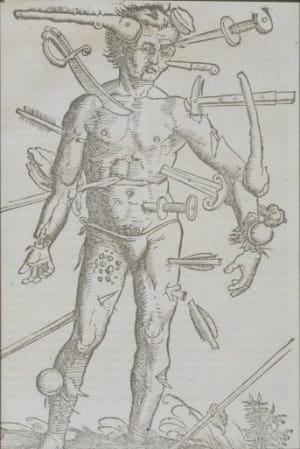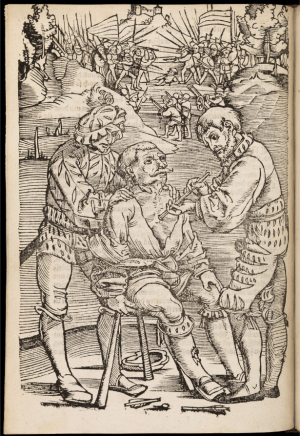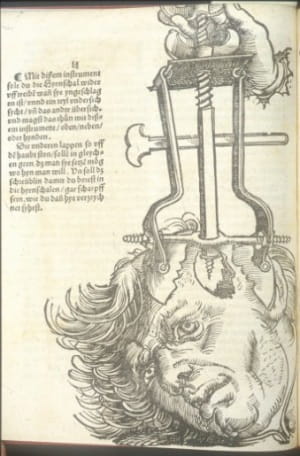‘Wound-man’: Feldtbuch der Wundartzney - Hans von Gersdorff (c.1480-1540)
25 May 2018
Susan Isaac

Gersdorff was a German army surgeon with decades of experience gained during the many wars in the sixteenth century, although little is known about his personal life or background. Written in vernacular German, his work is particularly valuable for its many important illustrations. Not only do they tell us about surgical practices of the day, but also aspects of social history such as what people wore and the interiors of houses. One battle scene shows a cannon guarded by a trio of soldiers armed with muskets. This version of the wound-man is the first such image to include a pair of cannonballs striking the figure’s wrist and shin and the subsequent damage caused.

Many of the images are quite technical, if not always complete or precisely accurate. The book was widely used as a basic surgical text for many years, most notably for its advice on limb amputation. Gersdorff was reputed to be very experienced, with at least 200 procedures to his credit.

There is one feature of the book which echoes contemporary practice: we can find advertising jingles such as the following in several places within the book: “When I’ve been hit in hip or thigh and wounded so that death is nigh I hope that God will stand by me and grant me Gersdorff’s surgery”.
Susan Isaac, Information Services Manager
